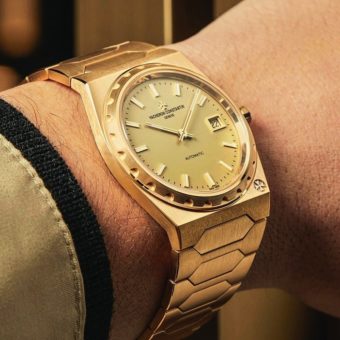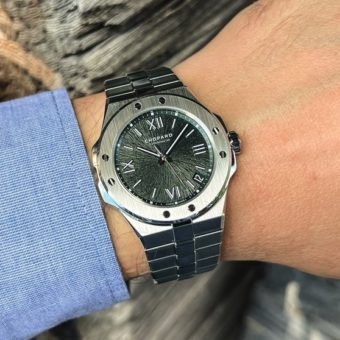“Defiantly elegant.” That’s the phrase that settled into my mind as I attempted to boil down the appeal of the Tutima Tempostopp, a chronograph that features a sizable 43-mm rose-gold case, a vintage-look bicompax dial, and a new, lavishly finished in-house movement, whose architecture was inspired by a historical chronograph caliber. The Tempostopp is not a subtle timepiece, but it is most assuredly a more luxurious one, in every respect, than its utilitarian military predecessor from the 1940s.
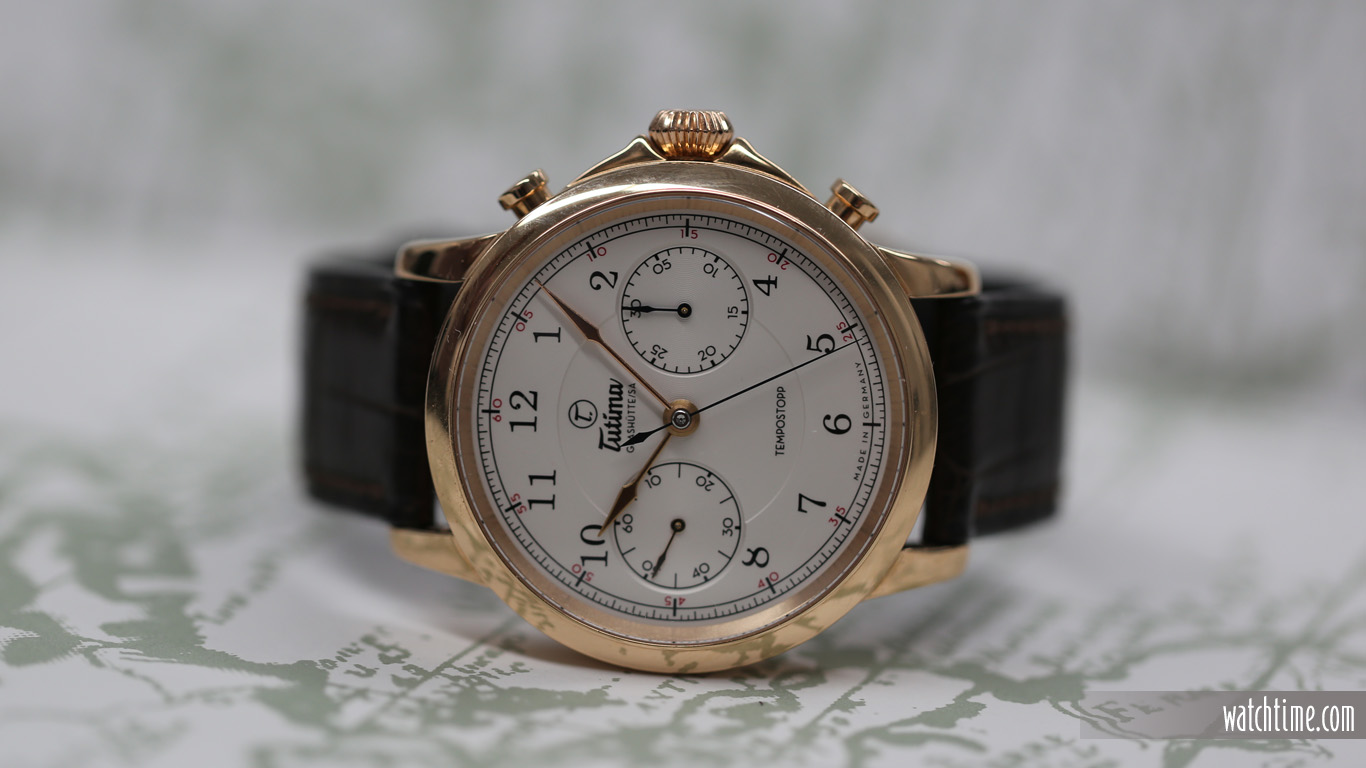
Taking a look at the watch the Tempostopp is based upon — the classic Tutima Fliegerchronograph, which we had the opportunity to borrow alongside the modern piece — one can see the obvious aesthetic influences, but also the ways in which Tutima smoothed out some of the original’s rougher edges for a much dressier watch. The case of the Tempostopp (in addition to the obvious size difference, and the use of gold rather than steel for the case) is more smoothly rounded and polished to a gleaming finish; the lugs in particular are very softly curved to hug the wrist. Also significantly missing on the Tempostopp is the bidirectionally rotating, sloped, coin-edged bezel of the vintage piece, a utilitarian element used by pilots, further speaking to the fact that the Tempostopp is a watch for the first-class lounge, not the cockpit.
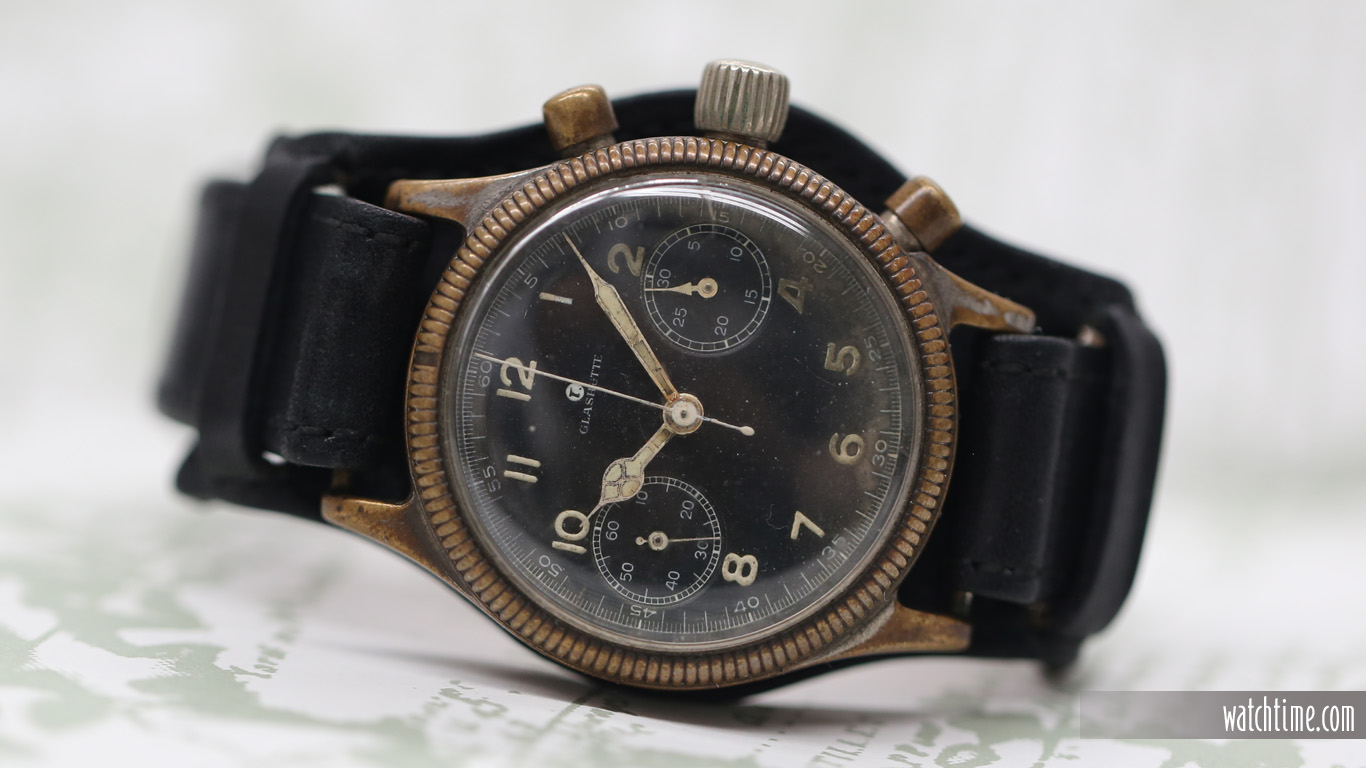
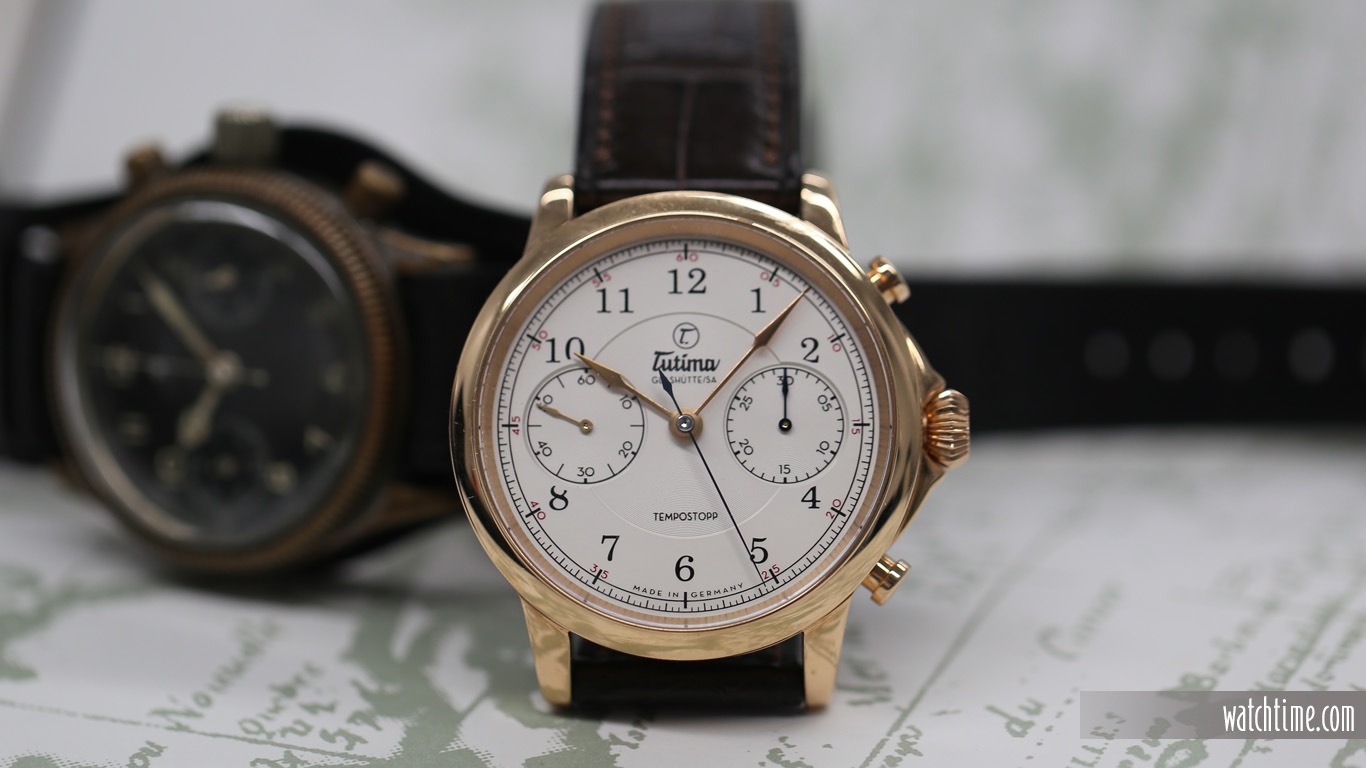
The plunger-type chronograph pushers on the Fliegerchronograph had large, slightly rounded heads, while the Tempostopp’s pushers are much less prominent — smaller, with flatter, thinner heads, requiring just the gentlest push of a finger to activate the stopwatch’s functions. Probably the biggest differences can be found around the crown: the Tempostopp’s crown is fluted like that of its vintage predecessor, but whereas the Fliegerchronograph’s barrel-shaped crown juts out from the side, the Tempostopp’s is more subtle, onion-shaped, and elegantly framed between two crown guards that seem to flow organically from the side of the case. The crown pulls out to just one position, to set the hands. A Tutima “T” logo decorates the crown’s tip.
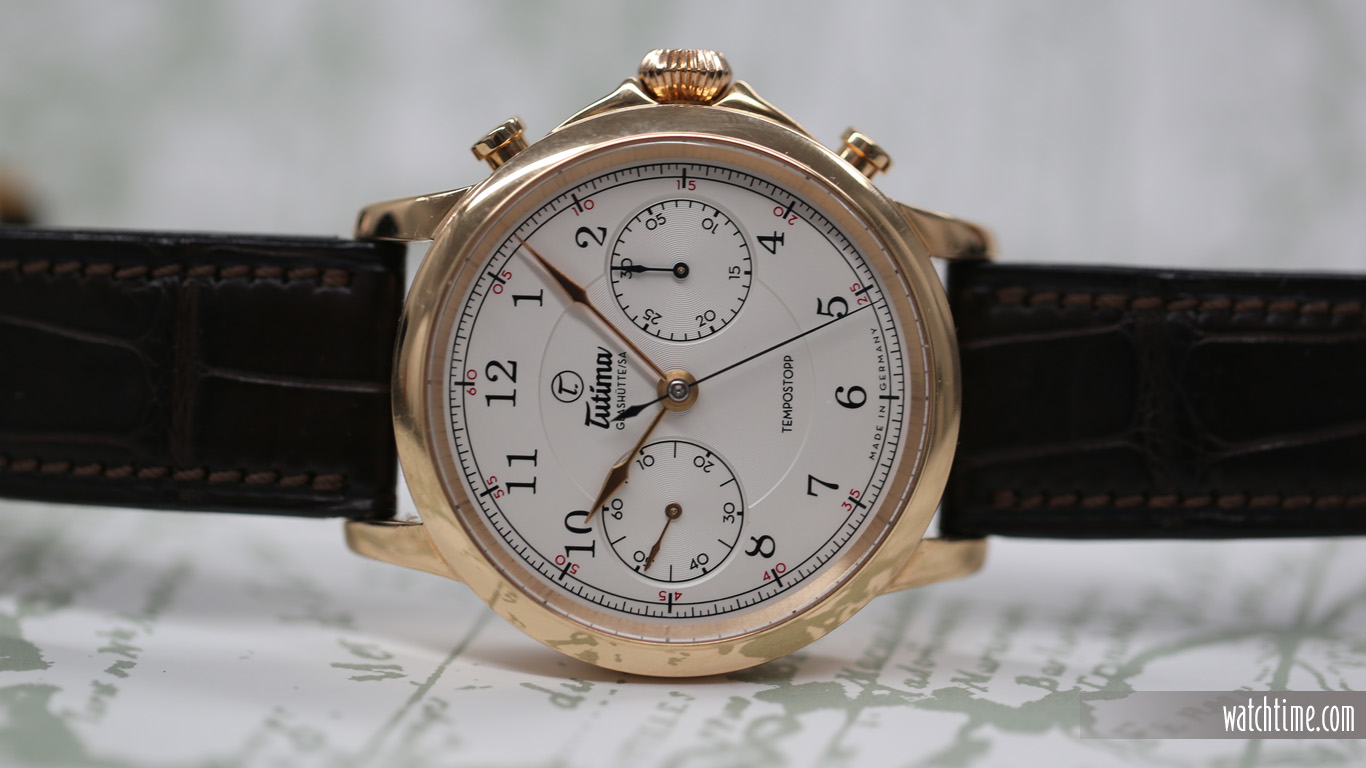
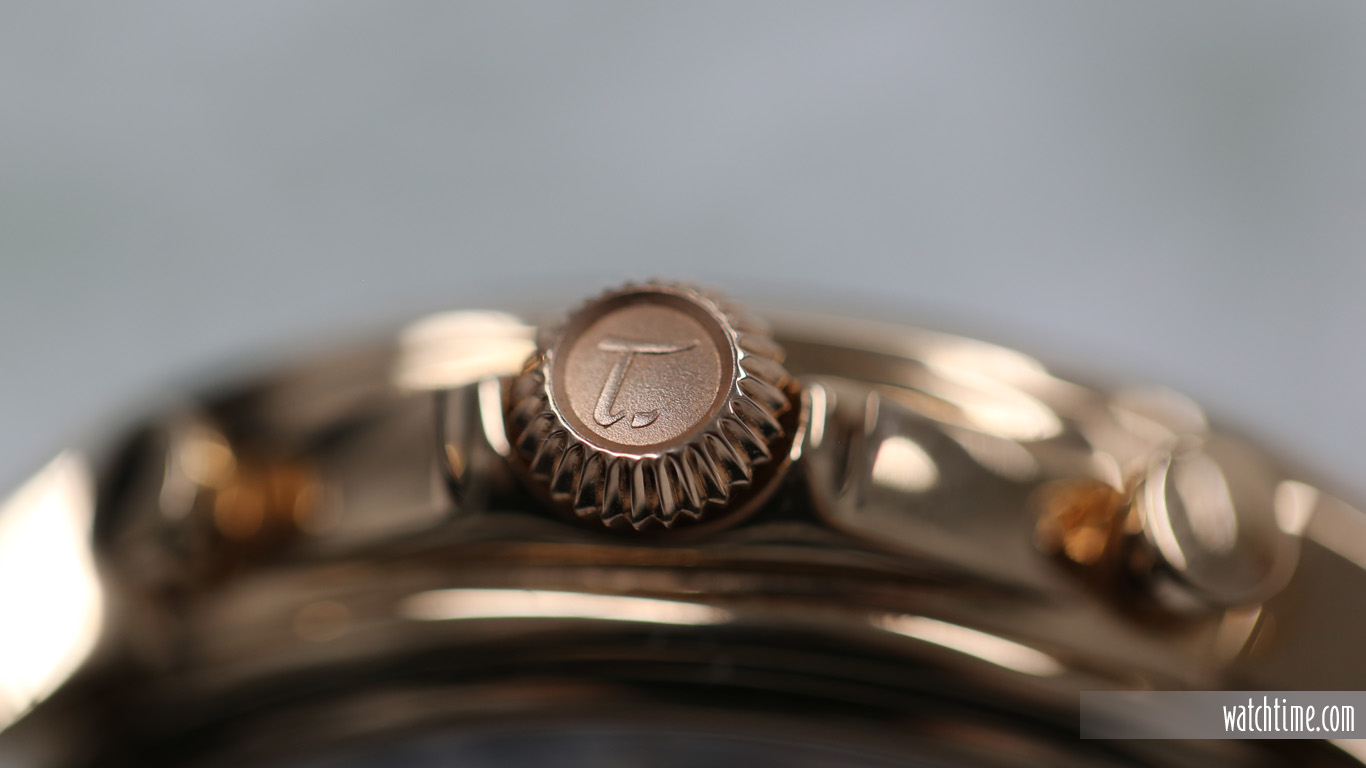
The Tempostopp retains the classical bicompax look of its ancestor (a look that is also, of course, reminiscent of other historical aviators’ watches), but gives it a fresh and handsome makeover. Gone are the vintage-look hands for hours and minutes, replaced by a pair of golden arrows, with the tip of the minute hand perfectly lined up with the edge of the minute track. Also gold is the small seconds hand in the subdial at 9 o’clock. Both chronograph hands — central seconds counter and the 30-minutes counter in the 3 o’clock subdial — are in blued steel.
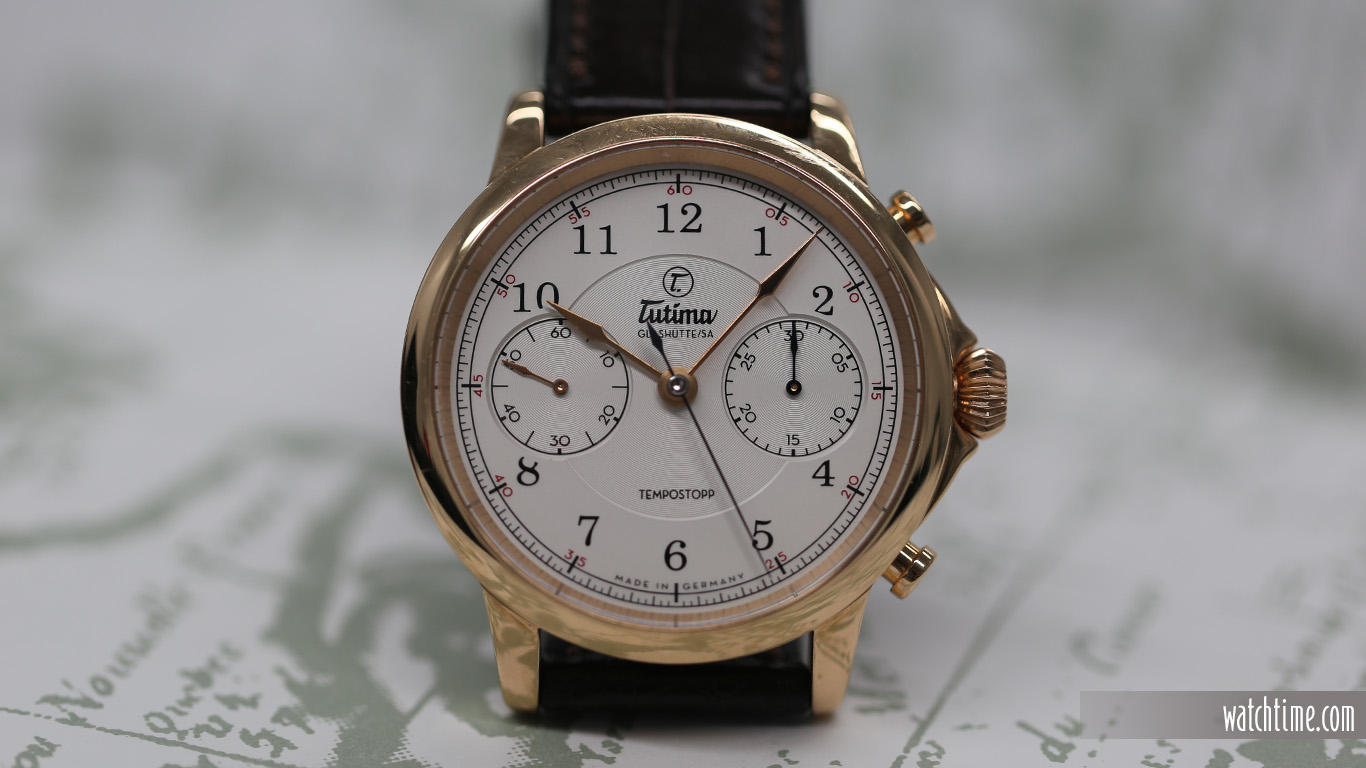

The sans-serif numerals on the Fliegerchronograph — white on a black dial for contrast, again as per other historical pilots’ watches — are here replaced by thin, serif-font numerals at the hour positions, displaced only at 3 and 9 for the subdials. A sans-serif font is used, albeit subtly, for the smaller numerals in the subdials and for the minute numerals at the 5-minute marks, which are distinguished in painted red. Another touch of contemporary luxury that would have surely been regarded as a waste of space on a 1940s military watch: the snailed finish on the subdials and in the center area of the opaline white dial.
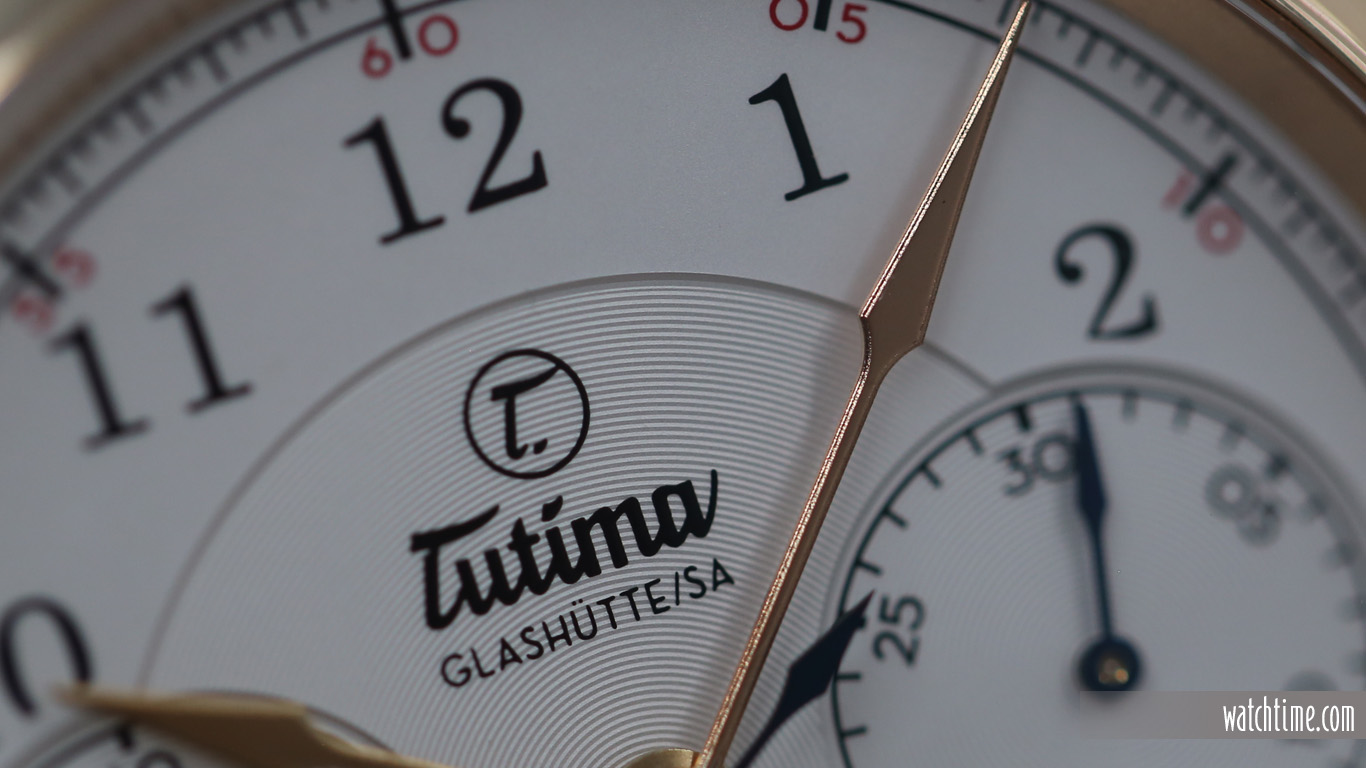
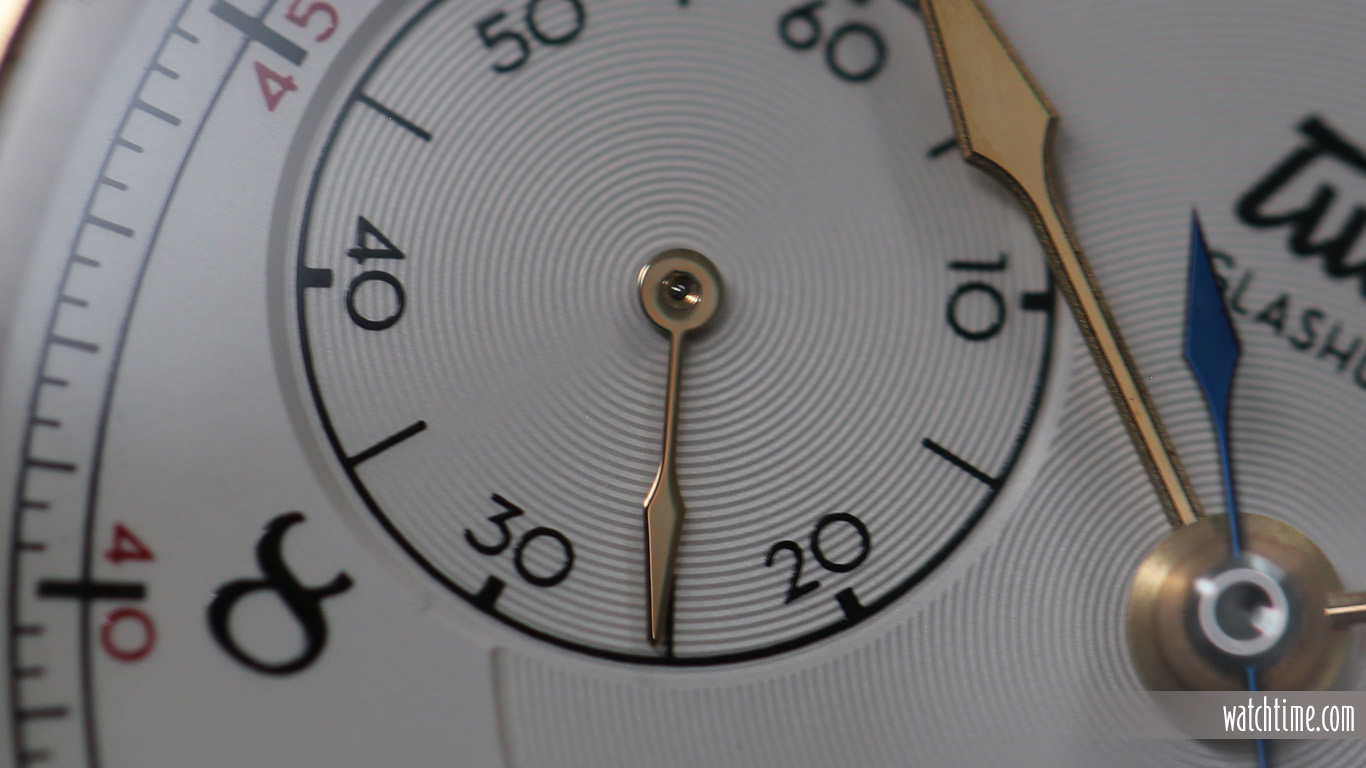
Tutima’s manual-winding Caliber T659, which the company developed over three years at its manufacture in the German watchmaking hub of Glashütte, and unveiled to commemorate the company’s 90th anniversary in 2017, was built as the modern descendant of the movement in the Fliegerchronograph, the renowned UROFA Caliber 59. (UROFA, incidentally, stands for Uhren-Rohwerke-Fabrik Glashütte AG, the movement-maker founded in the 1920s by Dr. Ernst Kurtz, who also founded Tutima in 1927.) Rebuilding the classic caliber was far from simple. As Tutima’s U.S. president Gustavo Calzadilla told WatchTime, there were no blueprints of the UROFA 59 available, so the entire 236-part mechanism had to be reverse-engineered from the few existing pieces available.
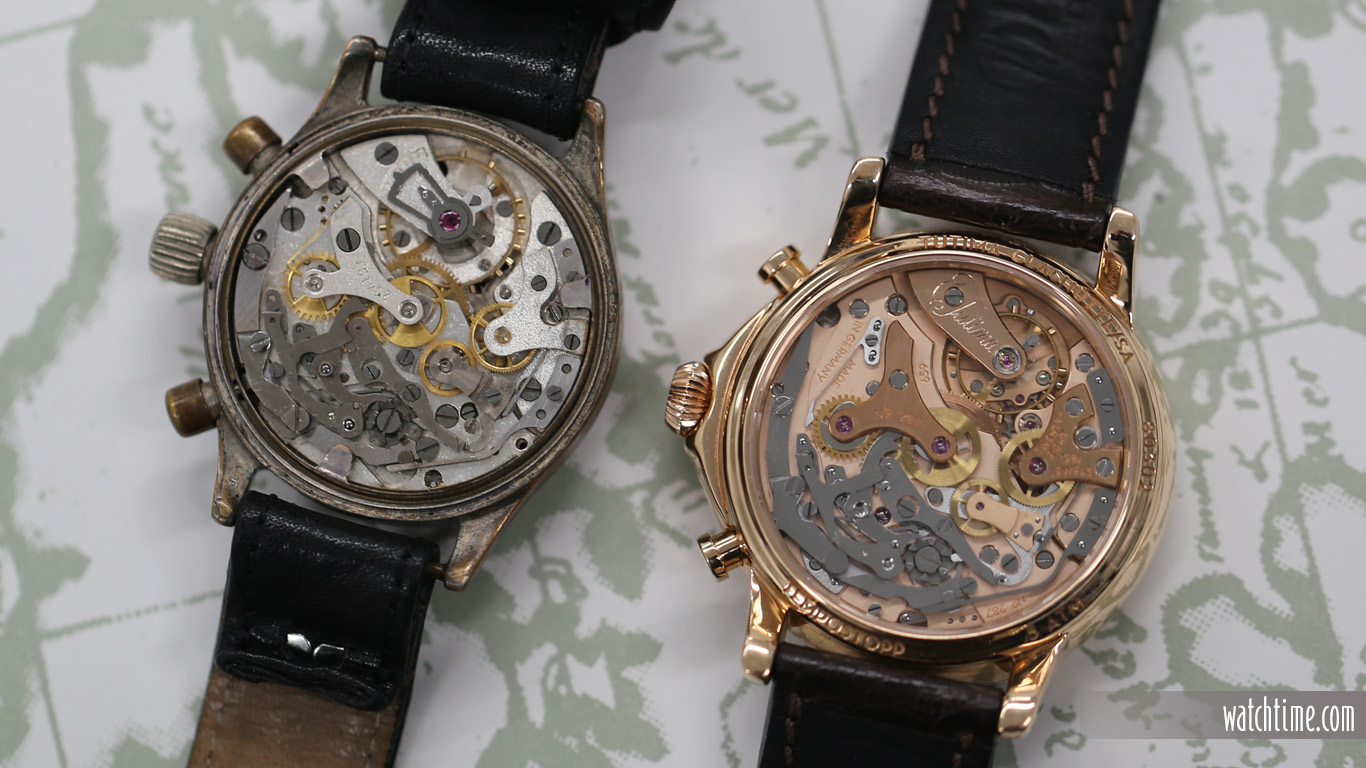
Of course, while the 1940s caliber ticked away behind a solid steel caseback, the new one is on full display through a sapphire back and it is a wonder to behold. A golden finish adorns the bridges and plates, as well as the balance cock, hand-engraved with the Tutima name in elegant cursive letters, which anchors the balance wheel, oscillating at 21,600 vph. Also in full view are the crucial parts of the flyback chronograph subassembly, which, like its ancestor, uses a classical column wheel with a horizontal clutch. Like the UROFA 59, the T659 incorporates a Breguet hairspring and a screw balance, although only the screws on the newer movement are in gold. Matte and sand-blasted finishes alternate on the golden parts, while straight graining appears on steel components like the chronograph bridges and levers.
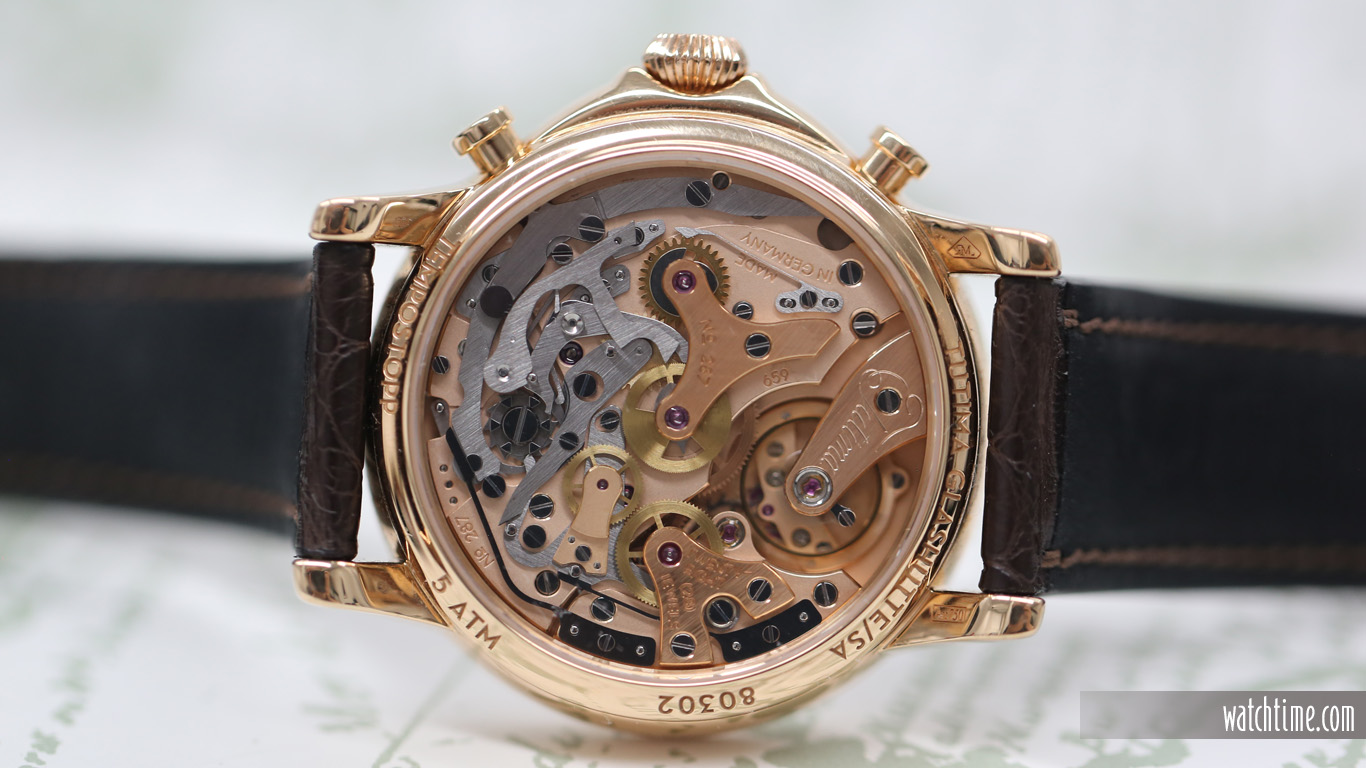
At 34 mm in diameter and 6.6 mm thick, the T659 is roughly equivalent in size to its historical antecedent, although the modern caliber has 28 jewels to the original’s 17. The T659’s 65-hour power reserve — a lengthy power reserve is, of course, always a beneficial feature in a watch that doesn’t wind itself — represents another modern upgrade. The integrated chronograph is equipped with a flyback function (historically referred to as “Tempostopp” in German; now you know where the name comes from) that allows the user to start the stopwatch with the top pusher, jump it back to zero with the bottom one, stop it again with the top one, then return it again to zero when all intervals have been timed. Again, a very utilitarian function for a bomber pilot, but the fellow wearing the modern watch may want to use it for more civilized activities — say, timing how long it takes each of his work colleagues to respond to an urgent email, or how long it takes a server to deliver his cocktail order.
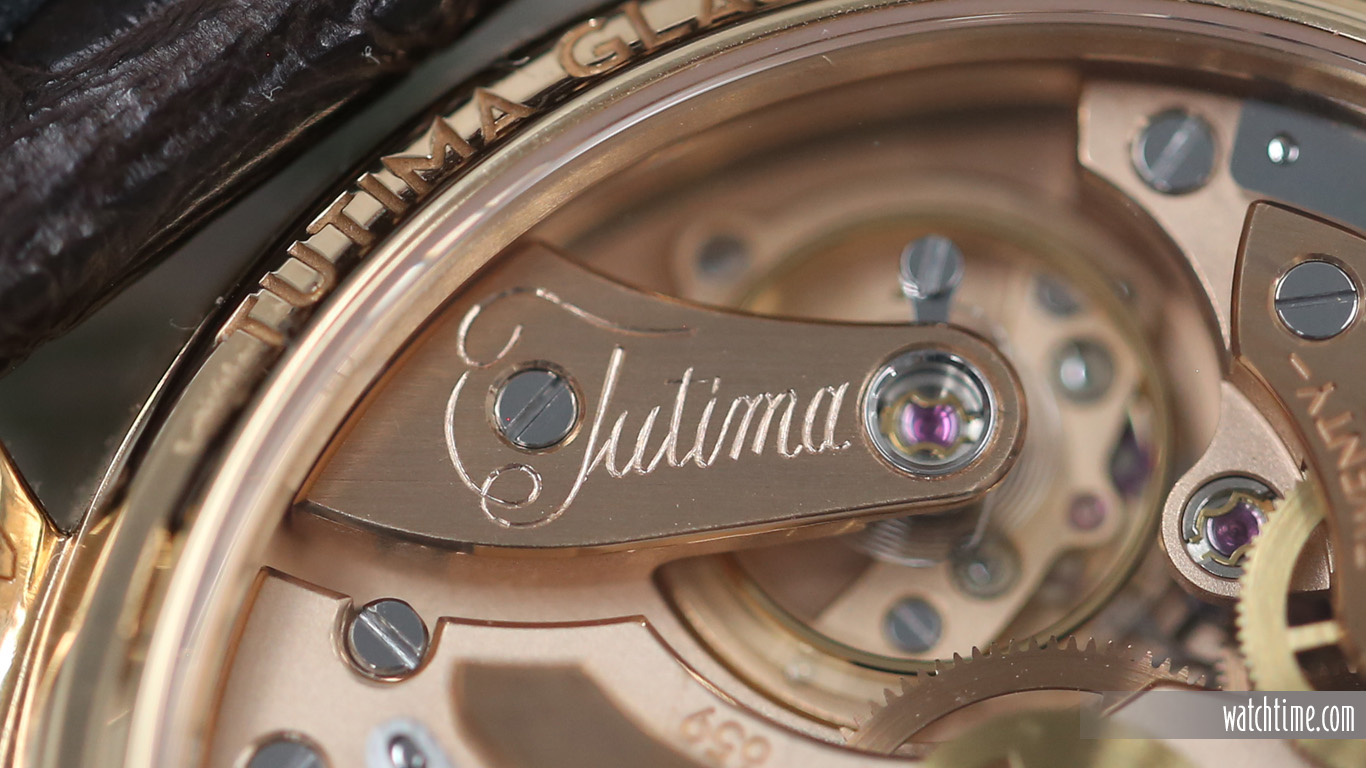
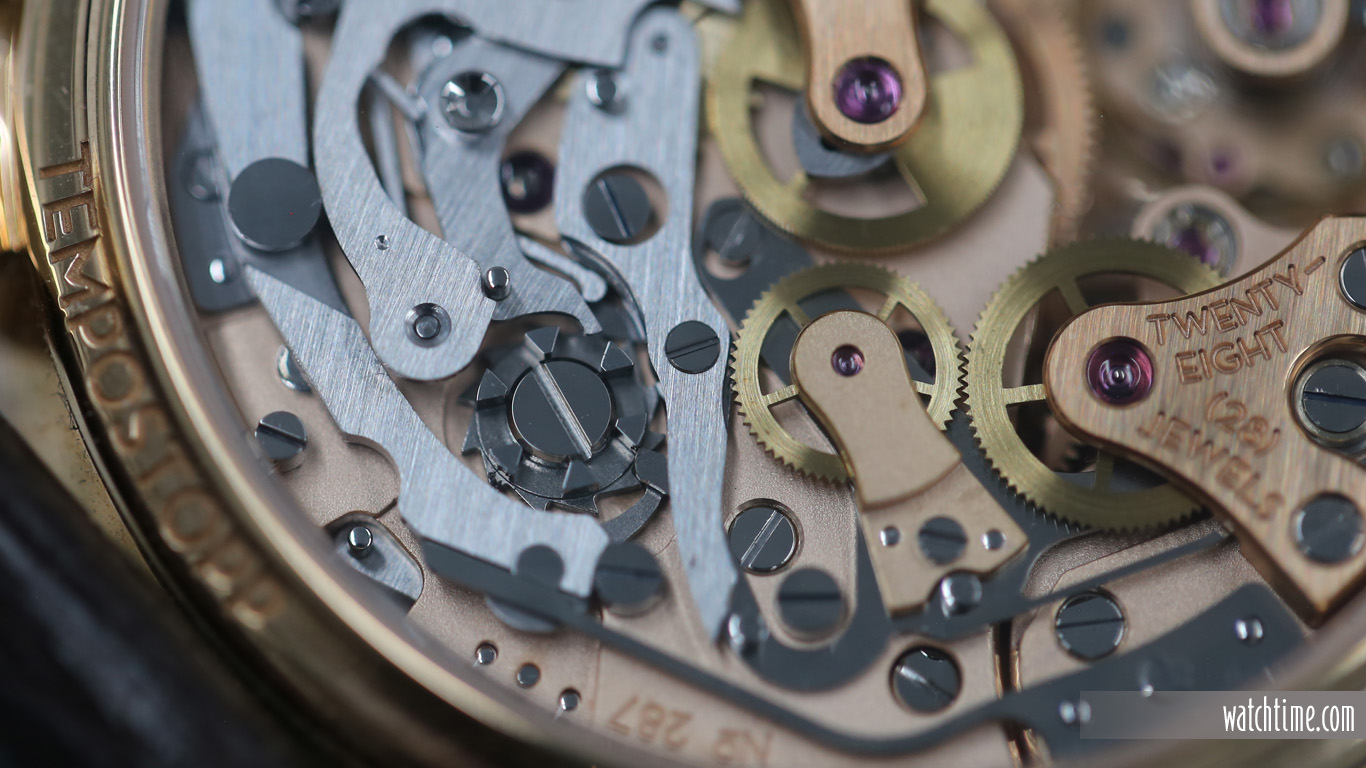
A watch this size and thickness in a solid gold case is assuredly going to make its presence felt on the wrist. It is heavy, but not unwieldy, and looks great peeking out from a shirt cuff, especially if you’re dressed to the nines (Again: defiant elegance). It helps that the watch’s reddish-brown alligator strap, with handsome tone-on-tone stitching, attaches to the wrist with a simple pin buckle rather than a large folding clasp, as it minimizes the amount of metal on the other side of the wrist. With the Tempostopp, and its thoroughly modern yet classically inspired caliber, Tutima has not only accomplished what only a few other German manufacturers have accomplished — created its own in-house chronograph movement — it has also taken one of the watch world’s most heralded military tool watches and evolved it into a luxurious men’s dress watch that holds its own alongside some of the best in the industry — both German and Swiss.
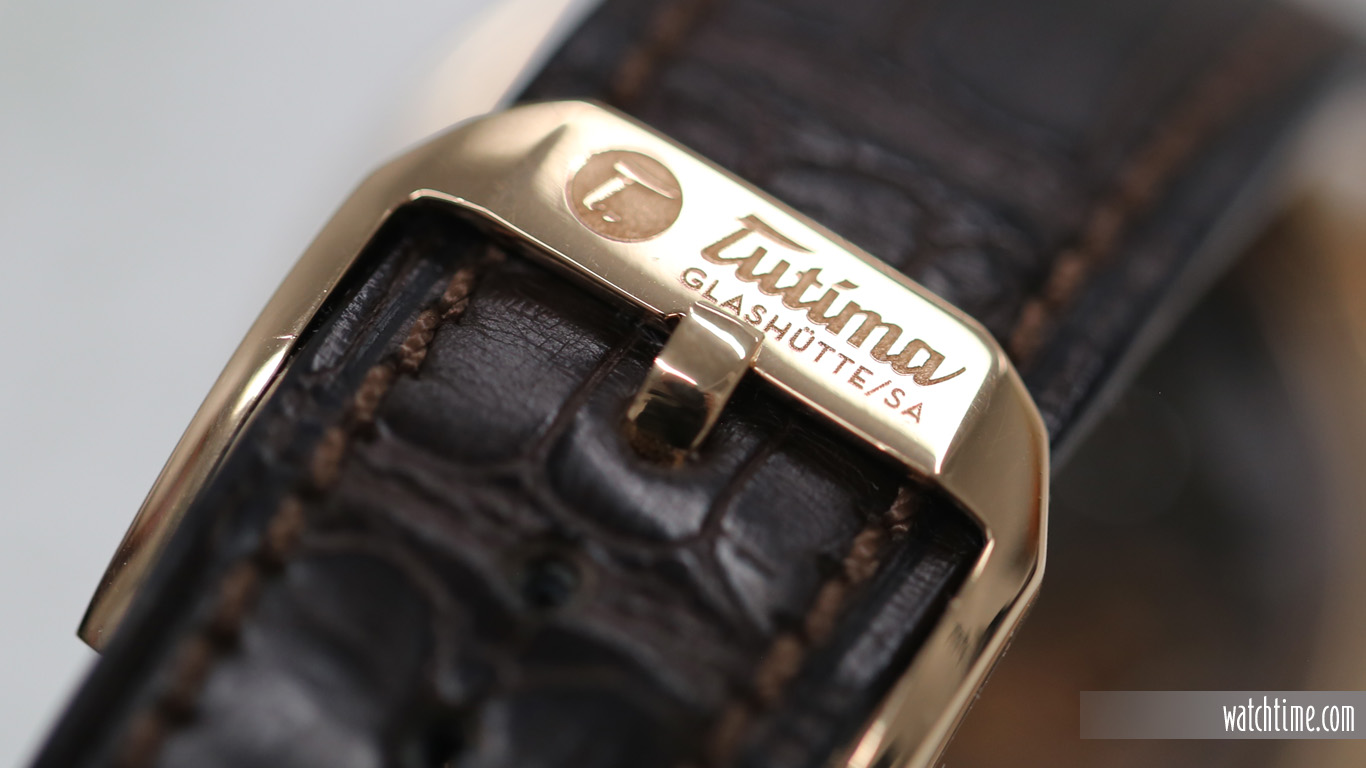

The Tutima Tempostopp Chronograph is limited to 90 pieces, representing the 90 years of Tutima’s history, and priced at $29,500.




